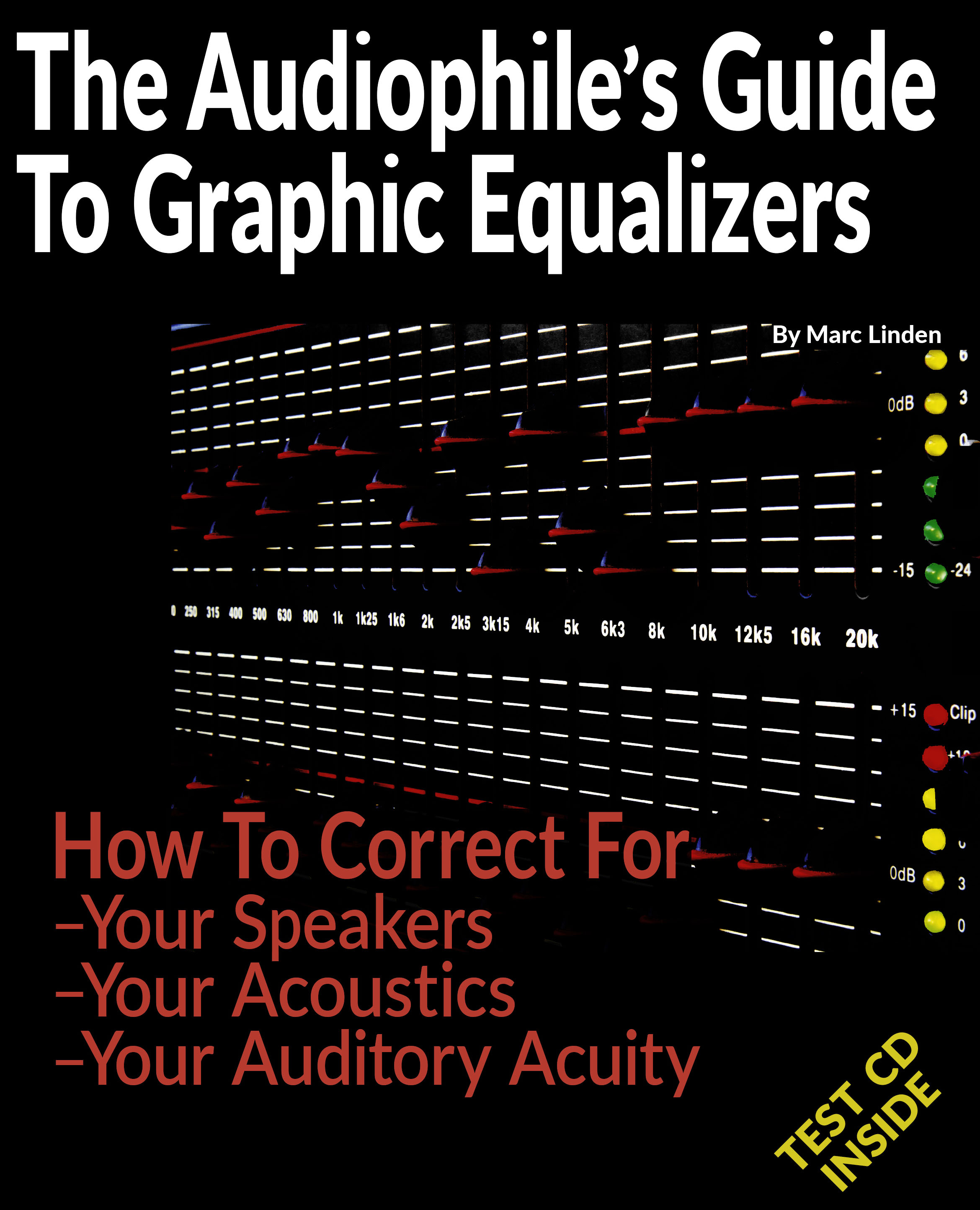
"The Audiophile's Guide To Graphic Equalizers" and companion Test CD provide music lovers with a simple, step-by-step procedure for eliminating the flaws, and optimizing the performance, of their home stereo systems.
Boynton Beach, Florida Jul 8, 2022 (Issuewire.com) - RSVP Media in Boynton Beach, FL, today announces its new book aimed at music lovers interested in improving the sound of their home audio systems. The Audiophile's Guide To Graphic Equalizers and companion Test CD is on sale now for $49.95 (www.eq-guide.com or www.amazon.com). The oversized paperback book is fully illustrated and contains step-by-step instructions for calibrating home sound systems by ear, without any special equipment.
Drawing on the latest research in music reproduction, audiology, and psychoacoustics, the sound of every stereo system, no matter its cost, can be significantly improved through calibration using a graphic equalizer. While rarely found in purist, audiophile systems, modern graphic equalizers can effectively compensate for the loss of fidelity caused by three factors.
The three factors that degrade the performance of all music systems are: the loudspeakers, the acoustics of the listening room, and the hearing ability of the listener. All these factors can impair the listening experience by unpredictably emphasizing or deemphasizing narrow bands of the audible spectrum. As a result, solo instruments lose their unique sonic signatures, voices sound unnatural and electronic, and multiple instruments playing together can no longer be individually identified. In short, speakers, acoustics, and hearing interact in complex ways to prevent the experience of live music.
Why do small inaccuracies introduced by imperfect speakers, acoustics, and hearing have such an outsize effect on the fidelity of the music? A tuning fork at 440 cycles per second emits a single pure tone; only 440 Hz is heard. However, no musical instrument produces just one pure tone. All instruments produce harmonics in addition to the fundamental, base, pure tone.
For example, a piano, a trumpet, and a saxophone can all play the same musical note at 440 Hz. Each instrument simultaneously produces harmonics, pure tones that are simple multiples of the fundamental. That means that each instrument also creates pure tones at 880Hz (2x440), 1320Hz (3x440), 1760Hz (4x440), etc. What distinguishes the sound of each instrument playing the same note is the volume of each of its harmonics. Every instrument gives a different weight to its harmonics. The difference in the relative volume of their harmonics is the only way the human ear can differentiate between a piano, trumpet, and saxophone (e.g., https://dspillustrations.com).
In recent years, digital room and speaker correction have gained well-deserved recognition as must-have components in any modern music system. Both kinds of correction rely on automated, digital signal processing to smooth the in-room frequency response curve. A reference microphone is used to determine which audio frequencies need boosting or cutting.
While microphone-dependent correction systems provide instantaneous, repeatable results, they have two major drawbacks. First, ears "hear" differently than microphones. And second, every individual has a unique auditory acuity. In the same way that people who require eyeglasses all require customized corrective lenses, all listeners with less than perfect hearing (approximately 92% of adults over 18) require customized corrective audio equalization.
The Audiophile's Guide To Graphic Equalizers and companion Test CD provide a method for simultaneously correcting for imperfect speakers, unique acoustics, and auditory acuity that varies widely from listener to listener. In fact, in most instances, the hearing correction will be more significant than either speaker or room correction. Microphone-based DSP components do not effectively compensate for the subjective element: hearing (i.e., www.hearingtest.online/).
System correction and calibration by ear using a graphic equalizer has additional benefits. It allows for individual, personal preference. Having set up their graphic equalizer themselves, users gain hands-on skill at adjusting each of its 31 frequency bands. With such familiarity, it's easy to make any final adjustments to suit the listener's personal preferences.
While a small number of high-end audio dealers offer room correction gear, none sell graphic equalizers. In the past, some graphic equalizers may have introduced unacceptable levels of distortion. However, modern GEQs, particularly digital models, no longer introduce audible distortion. More importantly, GEQs has proven very difficult to set up correctly. Frequently, music lovers (as well as hi-fi experts) would discover that their systems sounded worse following unsuccessful attempts at corrective equalization.
Fortunately, successful system calibration using a GEQ is no longer a frustrating, inexact procedure. The Audiophile's Guide To Graphic Equalizers and companion Test CD introduce an innovative, 7-step method for accurate calibration, compensation, and correction. The "how-to" book takes the reader through each step with clear instructions and helpful illustrations and examples. The companion Test CD contains 12 test tracks, 10 of which were newly created for this book, and they are available now for the first time.
The paperback and Test CD are not available as an ebook. The Guide comes with a 30-day guarantee, and it can be purchased online at either www.eq-guide.com or www.amazon.com. Countless examples have proven that dollar for dollar, no other component can improve system sound as much as a graphic equalizer.




Source :RSVP Media
This article was originally published by IssueWire. Read the original article here.














